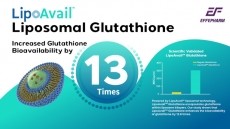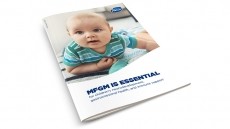Notes from Nutrition 2018 in Boston
Study links vitamin A levels to infant growth

Dr. Corrine Hanson, associate professor at the University of Nebraska Medical Center in Omaha, Nebraska, studies fat-soluble nutrients like vitamins A and E and omega-3s.
She presented her research on a cohort of 180 nationally representative mother and infant pairs, looking at various levels of their vitamin A (retinol, carotenoids, etc.).
Her team found that 10% of mothers in the cohort had vitamin A deficiency, and around 41% of moms were insufficient—not quite low enough to be deficient, but not meeting the recommended daily allowance either.
“This means that about 10% of moms would be classified by the World Health Organization as vitamin A deficient, and that appears to be driven, in our cohort, by race and socioeconomic status,” she told us.
Additionally, around 5% of the mothers tested positive for night blindness. “Omaha, Nebraska has a moderate public health problem with vitamin A deficiency in pregnant women. We did not know that, and we were not expecting that.”
A possible link to infant growth
Dr. Hanson said that her data revealed some trends in infant growth.
“The proportions of babies that were born with low birth weight were definitely higher in the lower maternal vitamin A categories,” she explained.
She admitted that the some statisticians who look at her data may argue that the comparison is not significant enough between the low and high vitamin A groups as the P value was low, but she argued that “it does hint to us that there is a problem.”
Additionally, the low vitamin A status was also linked to anemia in mothers, a more widely accepted implication of vitamin A deficiency.
“This suggests that babies in Nebraska are possibly being disadvantaged by starting life with very low levels of these compounds,” she argued.
Could it be caused by poor diet?
When it comes to the low retinol and vitamin A status, Dr. Hanson and her team are not sure what is causing it in Omaha.
Considering that the mothers had high zinc and protein levels—two nutrients found in meat—they posit that it has to do with the low consumption of fruits and vegetables.
This was highlighted especially when comparing the Omaha cohort to the vitamin A levels of a cohort in Nigeria.
“Unsurprisingly a high proportion of moms in Nigeria were also vitamin A deficient, but when you looked at their blood, they had much levels of carotenoids than the women in Nebraska did,” she said.
“We don’t have good criteria of knowing what’s low or what’s high, but the women in Nebraska had lower levels [compared to Nigerian mothers], and their babies had even lower levels.”















